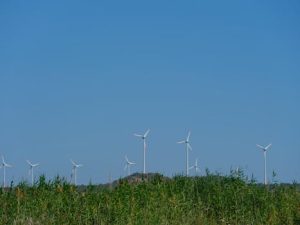Energy-Efficient Washing Machines: Water-Saving Tech for the Future
Welcome to the future of laundry! With the increasing focus on sustainable living and energy conservation, energy-efficient washing machines have become a necessity in every household. Not only do these machines help reduce our carbon footprint, but they also help save on utility bills. Among the various technologies incorporated in these washing machines, water-saving technology is at the forefront. Let’s delve deeper into how energy-efficient washing machines are revolutionizing the way we do laundry.
The Need for Energy-Efficient Washing Machines
The traditional top-loading washing machines use a significant amount of water per wash cycle, ranging from 20 to 40 gallons. This amount can vary depending on the type and size of the machine. With the majority of the population using these outdated models, the total water consumption amounts to millions of gallons per year. This also leads to a steep rise in energy consumption responsible for water heating, resulting in higher electricity bills and excess carbon emissions. Moreover, with the increasing water shortage crisis, it is crucial to make conscious choices and invest in energy-efficient washing machines that incorporate innovative water-saving technology.
The Science behind Water-Saving Technology
Energy-efficient washing machines come equipped with sensors and sophisticated control systems that optimize the water usage during a wash cycle. Unlike traditional models that use a fixed amount of water regardless of the load size, these machines utilize sensors to determine the appropriate water level needed for each load. These sensors detect the weight and fabric content of the laundry in the drum and adjust the water level accordingly. In some models, the sensors also regulate the water temperature, depending on the type of fabric and stain level, to further optimize energy consumption.
Innovative Techniques for Water-Saving
Manufacturers are continuously working towards developing new technologies to improve the energy efficiency of washing machines. One such advancement is the ‘Active Water’ technology by Bosch that uses load-sensing sensors to analyze the weight and type of fabric and uses only the required amount of water. Another technique is the use of a ‘TwinDos’ system by Miele, which automatically dispenses the exact amount of detergent needed for each wash cycle, preventing over-dosing and excess water usage. Many other brands offer features like ‘EcoSilence Drive’ and ‘PowerWash’ that use state-of-the-art motor technology and high-pressure water jets to clean clothes thoroughly with less water and energy.
The Benefits of Water-Saving Technology
The use of water-saving technology not only benefits the environment but also has a positive impact on our lifestyle and finances. These machines require significantly less water and energy per wash cycle, thus reducing utility bills. They also offer a gentler wash and use higher rotation speeds, leading to shorter drying times, and ultimately saving energy on drying as well. By choosing to invest in energy-efficient washing machines, we can contribute to water conservation and make a significant difference in the fight against climate change.
In Conclusion
In the era of advanced technology and increasing environmental concerns, it is imperative to make eco-friendly choices in our everyday lives. Energy-efficient washing machines with water-saving technology not only help us save water and energy but also provide us with a more efficient and effective washing experience. With a wide range of brands and models available, it has become easier to make a conscious decision and join the movement towards sustainability. So, let’s do our bit and switch to these futuristic washing machines, and pave the way for a greener and cleaner future.







